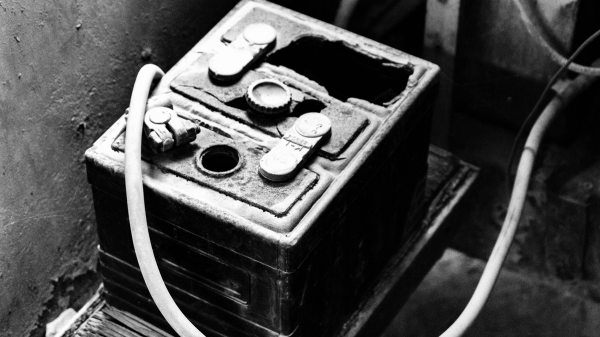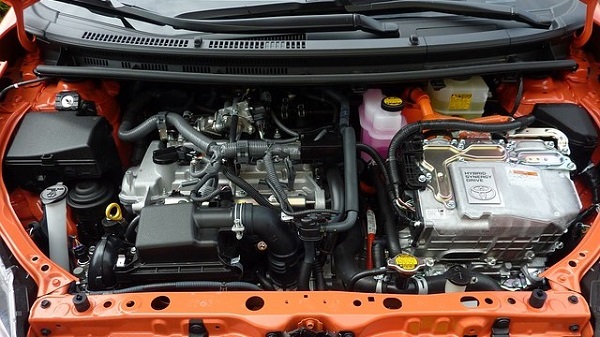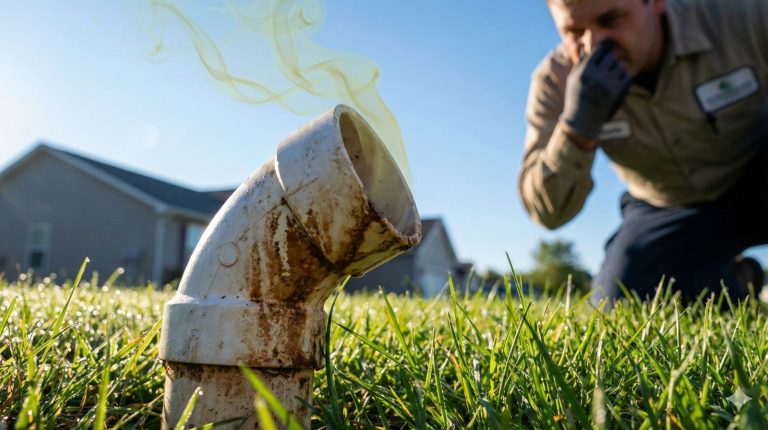The process of reconditioning old batteries is both an economically and environmentally sound practice that can extend the lifespan of batteries considerably. Among the key steps involved, the preparation of a safe working environment and the careful handling of battery components are paramount. Each phase, from the initial assessment to the final load test, is critical to ensuring that a battery can safely return to service. This guide will discuss each step in detail, providing insights into how seemingly minor adjustments can have major impacts on battery efficiency and longevity. What remains intriguing is how these steps interact to rejuvenate a seemingly spent battery.
Key Takeaways
- Understand the battery reconditioning basics: identify battery type, gather tools and materials, and follow safety precautions to restore old batteries.
- Assess the battery’s condition visually and with a multimeter to ensure it’s suitable for reconditioning.
- Mix and apply a baking soda solution to neutralize and clean the battery cells.
- Prepare a new electrolyte solution using distilled water and Epsom salt, and fill the cells carefully.
- Fully charge the reconditioned battery and monitor voltage levels to confirm successful reconditioning.
- Conduct a load test to verify the battery’s performance under simulated vehicle conditions.
Battery Reconditioning Basics
When it comes to reconditioning old batteries, there are several different types of batteries out there with varying charging methods. It is important to first identify which type of battery you need to recondition before attempting anything else.
Different types have different needs for successful reconditioning, so make sure to do your research on the particular battery beforehand. Additionally, most batteries require special safety precautions when handling them during the process; therefore, keep in mind all necessary measures while working on your project.
In order for any battery reconditioning project to be successful, proper tools and materials must be gathered ahead of time. This includes everything from finding replacement cells or parts needed for repairs as well as making sure you have access to devices such as multimeters for testing voltage output after each step of the process.
Without these items at hand the risk involved increases substantially and could lead to dangerous outcomes if not handled properly – something we want everyone undertaking this activity should avoid! With these resources handy though, success rates tend increase exponentially when compared with those who don’t take the extra precautionary steps.
Extend the Life of Your Batteries (DIY Method)
Batteries are expensive and create waste — but with the EZ Battery Reconditioning program, you can learn how to bring them back to life safely and affordably.
📌 Restore old batteries
📌 Keep them out of the landfill
📌 Save on replacements
👉 Get the EZ Battery Reconditioning guide → https://greenlifezen.com/EZ
Assess Battery Condition

To accurately assess the condition of an old battery before attempting reconditioning, begin by conducting a thorough inspection for any visible damage such as cracks, bulges, or corrosion on terminals. This initial visual inspection is vital as it helps identify external signs of degradation that could impact the battery’s functionality and safety.
Additionally, inspect the battery for any signs of leakage or unusual odors, which might indicate internal chemical instability or advanced sulfation.
Next, utilize a multimeter to measure the battery’s voltage. A reading of around 12.6 volts typically signifies a fully charged, healthy battery, whereas a voltage between 10V and 12.6V may suggest that the battery is undercharged but potentially recoverable. This step is important to determine the existing capacity of the battery and to gauge how much reconditioning it might require.
Furthermore, check the electrolyte level, particularly in lead-acid batteries. Confirm the electrolyte sufficiently covers the plates. If levels are low, cautiously add distilled water to restore the proper balance, taking care not to overfill.
These assessments combined—visual inspection for structural integrity, voltage testing for capacity, and electrolyte level checks for chemical balance—provide a thorough understanding of an old battery’s condition and readiness for reconditioning.
Prepare Safety Equipment
Before undertaking the task of reconditioning old batteries, it is critical to equip oneself with the necessary safety gear. Essential protective equipment includes gloves and goggles to shield against the corrosive effects of battery acid. Additionally, setting up a safety-conscious workspace in a well-ventilated area minimizes the risk posed by hazardous fumes and facilitates safe handling of materials throughout the process.
Essential Protective Gear
Ensuring your safety is paramount when reconditioning old batteries, as the process can expose you to hazardous chemicals and reactions. To mitigate these risks, adopting extensive safety precautions is essential.
First and foremost, always wear protective gloves to safeguard your skin from direct contact with battery acid, which is notorious for causing severe burns or irritation. Complement this protection with safety goggles, which serve to shield your eyes from acid splashes and flying debris encountered during the battery reconditioning process.
Additionally, wearing a face mask is essential. It acts as a barrier against the inhalation of harmful fumes released during the maintenance of batteries, particularly in environments that lack adequate ventilation.
Speaking of which, ensuring a well-ventilated workspace is non-negotiable. It considerably reduces the risk associated with inhaling hazardous gases that batteries emit when being charged or cleaned.
Lastly, prepare for accidental spills by keeping a bucket of baking soda and water within easy reach. This mixture serves as an effective neutralizing agent, swiftly handling any acid spills, thereby preventing potential injuries and contributing to a safer reconditioning process.
These steps are fundamental in maintaining a secure environment while handling battery acid and other related substances.
Safety Area Setup
Setting up a secure area for reconditioning batteries is essential to maintaining a safe working environment. Begin by selecting a well-ventilated area to minimize the buildup of hazardous gases emitted during the battery reconditioning process. This proactive step is important for making certain that the air remains clear and breathable, thereby safeguarding your respiratory health.
Next, prepare your safety area setup by arranging all necessary safety equipment within easy reach. This includes durable gloves, which are fundamental for protecting your hands from battery acid and potential chemical burns. Additionally, wear goggles to shield your eyes from any accidental splashes during the handling of liquids. Protective clothing should also be worn to cover exposed skin and prevent irritations or more severe injuries.
For the cleaning process, ready a solution made from a mixture of baking soda to water in a 2-to-1 ratio. This solution effectively neutralizes battery acid, reducing the risk of corrosion and enhancing safety.
Make sure you have a clean, organized workspace to efficiently manage tools like buckets and screwdrivers, which are significant for safely emptying battery cells. These steps are important to minimize risk and promote a secure environment for battery reconditioning.
Handling Hazardous Materials
Safety is paramount when handling hazardous materials in the battery reconditioning process. To guarantee your well-being and maintain a secure environment, it is vital to equip yourself with the appropriate protective gear. Always wear gloves and goggles to shield your skin and eyes from the corrosive properties of battery acid. These simple precautions prevent direct contact and minimize the risk of injury.
Operating in a well-ventilated area is equally important. This practice helps to disperse any harmful fumes that may emanate from the battery during the reconditioning process, safeguarding your respiratory health.
Prepare a cleaning solution composed of a 2-to-1 ratio of baking soda to water. This mixture is effective in neutralizing battery acid, making it safer to manage when cleaning battery terminals or dealing with spills.
Additionally, keep a dedicated bucket on hand to collect and guarantee the safe disposal of any battery fluid or residues, adhering to local environmental regulations.
Lastly, familiarize yourself with emergency procedures and have neutralizing agents like vinegar readily available. These measures are essential for swiftly managing accidents, further emphasizing the importance of preparedness in maintaining safety while dealing with hazardous materials.
Clean Battery Terminals
Inspecting your battery terminals for signs of corrosion, often identifiable as a white, crusty substance, is a critical first step in maintaining peak battery performance. Corrosion at the terminals can impede electrical connections, thereby reducing the efficiency and lifespan of your battery.
To effectively address this issue, follow these detailed steps:
- Prepare the Cleaning Solution: Mix baking soda and water in a 2-to-1 ratio. This solution effectively neutralizes acid and aids in dissolving the corrosion present on the battery terminals.
- Apply the Cleaning Paste: Utilize a toothbrush or a wire brush to gently apply the cleaning paste on the corroded areas. Scrub these areas thoroughly to break down the corrosion and restore conductivity.
- Scrub Heavily Corroded Areas: For terminals with severe corrosion, use steel wool for a more aggressive cleaning. Verify that all the corrosion is removed to prevent future electrical issues and enhance the terminal’s performance.
- Rinse and Dry: After scrubbing, rinse the terminals with clean water to eliminate any residual cleaning solution. Dry the terminals completely to avoid moisture accumulation, which can lead to further corrosion.
Adhering to these steps guarantees your battery terminals remain clean, thereby enhancing the overall performance and longevity of your battery.
Neutralize and Empty Cells
Before initiating the neutralization and emptying of battery cells, it is vital to don protective gear such as gloves and goggles to protect against the hazardous battery acid.
Starting with a safety-first approach guarantees you are shielded from potential harm, empowering you to handle the task with confidence.
Once protected, carefully remove the battery caps. This step is essential, as it prevents any accidental spillage while the battery is being neutralized and emptied.
With the cells exposed, prepare your neutralizing solution. Mix baking soda with water in a 2-to-1 ratio, a simple yet effective compound to neutralize the acid within the battery cells. This mixture will react with the acid, creating a bubbling effect, indicating the neutralization process is underway.
Gently pour the neutralizing solution into each cell, allowing it to fully react with the acid. Once the bubbling ceases, proceed to drain the contents safely into a designated bucket.
Draining the contents meticulously guarantees that no hazardous residues remain.
Finalize the process by rinsing the now empty cells with clean water. This step washes away any lingering acidic particles, rendering the cells safe for the reconditioning process.
Extend the Life of Your Batteries (DIY Method)
Batteries are expensive and create waste — but with the EZ Battery Reconditioning program, you can learn how to bring them back to life safely and affordably.
📌 Restore old batteries
📌 Keep them out of the landfill
📌 Save on replacements
👉 Get the EZ Battery Reconditioning guide → https://greenlifezen.com/EZ
Create New Electrolyte Solution
In reconditioning lead-acid batteries, preparing a new electrolyte solution is essential; start by accurately mixing 4 cups of distilled water with 4 ounces of Epsom salt to guarantee the correct chemical composition.
When applying the solution to the battery cells, pour carefully to avoid overfilling and make certain each cell is evenly filled. Then securely fasten the caps to prevent any leakage.
It is imperative to maintain the purity of the distilled water used, as any contaminants can adversely affect both the performance and longevity of the reconditioned battery.
Mixing Electrolyte Ingredients
Creating a new electrolyte solution is a vital step in reconditioning old batteries and begins with the precise mixing of 4 cups of distilled water with 4 ounces of Epsom salt. This mixture is important for revitalizing the battery’s performance and extending its lifespan.
Here is a straightforward guide to preparing the electrolyte solution:
- Combine Ingredients: In a clean container, mix 4 cups of distilled water with 4 ounces of Epsom salt. The purity of distilled water guarantees that no impurities interfere with the chemical process inside the battery.
- Stir Thoroughly: Stir the mixture until the Epsom salt is completely dissolved. This step is essential as it guarantees the magnesium sulfate is evenly distributed, enhancing the conductivity of the electrolyte solution.
- Confirm Proper Levels: When adding the solution to the battery cells, make sure the liquid covers the lead plates. This prevents sulfation, a process that can lead to decreased battery efficiency and lifespan.
- Shake Gently: After filling, carefully shake the battery to confirm the new electrolyte solution is evenly distributed across the battery cells. This step prepares the battery for an effective recharging process.
Solution Application Techniques
Applying the newly created electrolyte solution to lead-acid batteries requires meticulous attention to detail to guarantee safety and maximize battery efficiency.
First, confirm the integrity of your workspace by confirming that all necessary safety equipment is in place. Start by emptying the old electrolyte from the battery cells. It’s vital to handle this step with care; use a baking soda solution to neutralize any residual acid effectively, preventing any potential spills and guaranteeing a safe environment.
Once the cells are cleared and neutralized, prepare the new electrolyte solution. Mix 4 cups of distilled water with 4 ounces of Epsom salt, stirring until fully dissolved. This mixture helps restore the battery’s chemical balance and is essential for enhancing performance.
Carefully refill each battery cell with this new electrolyte solution, taking care not to overfill. After filling, securely replace the caps on each cell to avoid any leaks.
Gently shake the battery to confirm the new solution is evenly distributed across the cells. This step is fundamental for achieving peak battery performance, as it helps integrate the electrolyte thoroughly within the battery.
Ensuring Solution Quality
To guarantee the highest quality of the electrolyte solution for battery reconditioning, one must begin by mixing 4 cups of distilled water with 4 ounces of Epsom salt. Confirming that the Epsom salt is fully dissolved in the distilled water is vital as it affects the efficiency and capacity of the battery.
Here are the steps to confirm the creation of a high-quality electrolyte solution:
- Use Pure Distilled Water: Always opt for distilled water to prevent any contaminants that could impair the battery’s performance and shorten its lifespan.
- Confirm Complete Dissolution: Stir the solution thoroughly until the Epsom salt has completely dissolved. This uniformity in the solution guarantees ideal reconditioning results.
- Wear Protective Gear: Safety is paramount. Always wear gloves and safety goggles to protect against potential spills or splashes during the mixing process.
- Refresh Battery Cells: Carefully replace the old electrolyte solution in the battery with the new mixture. This can rejuvenate the battery’s capacity and greatly extend its usability.
Recharge and Monitor Battery
Once the battery has undergone reconditioning, it is imperative to fully charge it using a charger that is compatible and set at a 12V / 2 amps rate for about 36 hours, guaranteeing it reaches its ideal capacity. This step is essential for restoring the battery’s full potential and preparing it for effective service.
During the charging process, it’s important to monitor the progress using a multimeter to verify the voltage levels are rising appropriately. Aim for a healthy voltage reading of 12.42V after the charging period, which signals that the battery is holding a sufficient charge.
Further, conducting a load test is crucial to assess the battery’s performance under typical operating conditions. Turn the vehicle to the ON position with high beams activated to simulate a load. A successful reconditioning should reflect a voltmeter reading of at least 9.6V under this load. If the voltage remains low after the initial charging phase, extend the charging for an additional 12 hours.
Regular maintenance checks on the voltage over time are necessary to guarantee ongoing battery health. Fluctuations in voltage readings may indicate a need for further maintenance or potential decline in battery health, guiding timely interventions to prolong battery life.
Perform Final Testing
How effectively does your reconditioned battery perform under typical operating conditions? Final testing is essential to guarantee the successful reconditioning of your battery. This stage not only verifies the restoration but also measures the battery’s ability to hold and deliver power under load.
Follow these detailed steps to evaluate the performance:
- Voltage Measurement: After the recharging process, use a multimeter to measure the battery’s voltage. A reading of at least 12.42V suggests successful reconditioning. If the voltage is lower, extend the charging time by an additional 12 hours and retest.
- Load Test: Turn the vehicle’s ignition to the “ON” position and activate the high beams. The voltage should not drop below 9.6V under this load. This test is vital to confirm the battery’s ability to perform in real-world conditions.
- Consistency Check: Monitor the battery’s performance over an extended period post-reconditioning. Consistent voltage readings and reliable operation indicate a successful restoration.
- Record Keeping: Track all test results meticulously. Documenting these findings helps in evaluating the battery’s longevity and the effectiveness of your reconditioning technique, allowing for adjustments in future sessions.
Conclusion
To sum up, the successful reconditioning of old batteries requires meticulous adherence to a structured process. This involves initial assessment, thorough cleaning, and careful handling of chemicals, followed by precise creation and application of a new electrolyte solution. Constant monitoring during the charging phase and extensive testing post-recharge are critical to ensuring battery efficacy and safety.
Documenting the outcomes provides valuable insights for future reconditioning efforts, demonstrating a commitment to sustainability and technical proficiency. If you’re really serious to have a great profitable skill of how to recondition old batteries (almost any kinds of them), then it means you need a really great guide to master it. Getting to the most important principles of battery reconditioning skill will help you doing it the right way.
🔋 Recondition Your Old Batteries & Save Money
Don’t throw away batteries that still have life left! The EZ Battery Reconditioning system teaches you simple, step-by-step methods to rejuvenate old batteries — from car batteries to golf cart and deep-cycle batteries — using tools most people already have at home.
Why this matters for eco-minded readers:
✔ Reduces hazardous waste from discarded batteries
✔ Saves money on replacements
✔ Empowers DIY sustainability skills
✔ Ideal for gardens, solar setups, and off-grid systems
👉 Learn more about the EZ Battery Reconditioning system here:
🔗 https://greenlifezen.com/EZ
A smart, budget-friendly way to extend battery life while protecting the planet — perfect for homesteaders, gardeners, solar owners, and DIYers.




